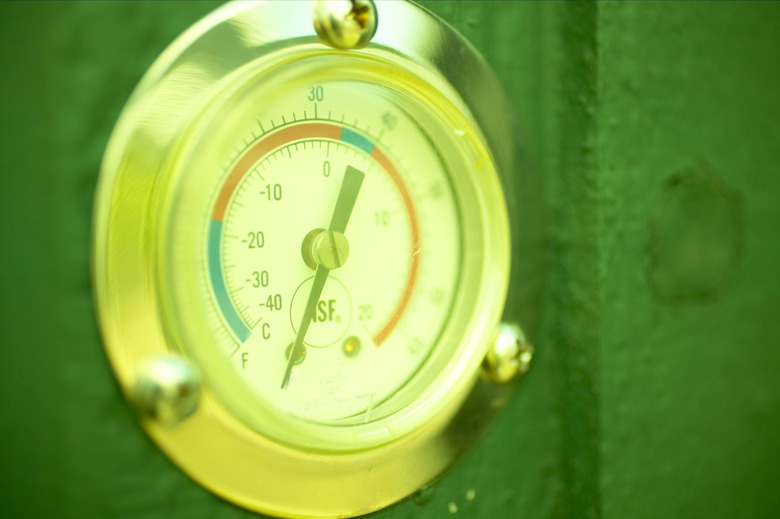Weather Barometer Facts
The Earth's pressure drives wind and weather patterns across the globe. The measurement of pressure, along with other variables such as temperature, helps meteorologists predict weather. To measure pressure, meteorologists use a device called a barometer. There are many different types of barometers, each of which have varying complexity.
Concept of Pressure
Concept of Pressure
Pressure is defined as the force per unit area. Atmosphere pressure is the result of gas molecules colliding with objects. The more air molecules squeezed into a fixed volume, the greater the number of collisions, resulting in a high pressure. Reducing the number of molecules in a fixed volume reduces the pressure. Pressure has a number of units including pascals, pounds per square inch (psi), bar, Torr and atmospheres. The most commonly used unit in scientific disciplines is the pascal.
Mercury Barometer
Mercury Barometer
Italian scientist Evangelista Torricelli created the first barometer in 1643. It consisted of a glass tube that was sealed at one end, filled with mercury and then turned over into a dish of mercury. This is the well-known mercury (Torricellian) barometer, and they are still available to buy from specialist shops. Unfortunately, the poisonous nature of mercury means they are rarely used within the home; aneroid barometers provide a safer alternative.
Aneroid Barometer
Aneroid Barometer
French inventor Lucien Vidie made the first practical aneroid barometer in 1843. Today, these instruments have become the most commonly used devices to measure pressure. The device consists of a capsule, made from beryllium and copper, which has been evacuated of air. As the pressure around the capsule changes, it contracts or expands. The capsule is connected to linkages that translate the contraction or expansion into rotation of a dial.
Weather Prediction Using a Baromaeter
Weather Prediction Using a Baromaeter
The local atmospheric pressure changes daily, and this is one of the major determining factors in local weather. Low pressure areas are often created over warm regions, since warm air rises, decreasing its density and pressure. As the warm air cools within the atmosphere, it forms clouds that can lead to precipitation. This is why the measurement of low pressure using a barometer is often associated with bad weather. Cold regions lead to local cooling in the atmosphere above, increasing the pressure. Increased pressure leads to an outward flow of air, pushing clouds away. This is why the measurement of a high pressure on a barometer indicates fine weather.
Cite This Article
MLA
Markings, Samuel. "Weather Barometer Facts" sciencing.com, https://www.sciencing.com/weather-barometer-19429/. 24 April 2017.
APA
Markings, Samuel. (2017, April 24). Weather Barometer Facts. sciencing.com. Retrieved from https://www.sciencing.com/weather-barometer-19429/
Chicago
Markings, Samuel. Weather Barometer Facts last modified March 24, 2022. https://www.sciencing.com/weather-barometer-19429/
